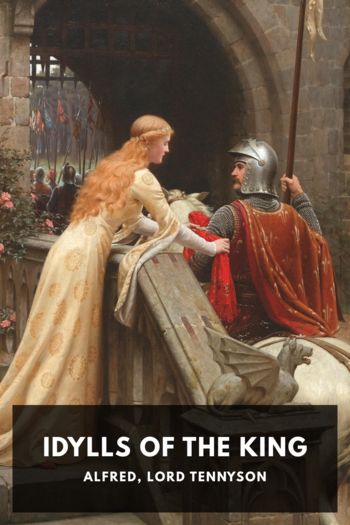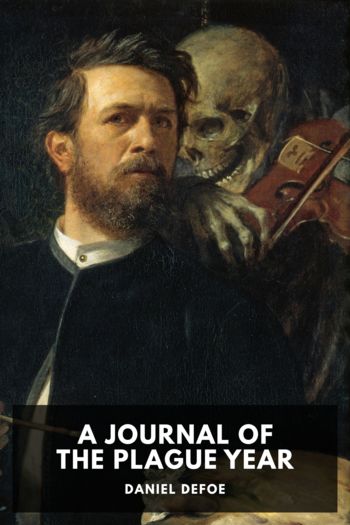Selkirk's Island, Diana Souhami [the best books to read TXT] 📗

- Author: Diana Souhami
Book online «Selkirk's Island, Diana Souhami [the best books to read TXT] 📗». Author Diana Souhami
He sailed due east and reached Valparaiso in four days. No one believed his claim to have made the voyage from Lima in only a month. He was accused of using sorcery to pervert the winds and tides and was interrogated by officers of the Inquisition. When other mariners proved his route he was rewarded with a country estate at Quillota for service to the King of Spain and given the title Chief Pilot of the South Sea.
Merchants then went to The Island to fell its sandalwood trees and to kill fur seals and trap lobsters. Plans were mooted to colonise it, to use it as a base to defend the South Sea which the Spaniards viewed as theirs. A businessman, Captain Sebastian Garcia Carreto of Estremadura shipped lobsters, timber and sealskins back to the port of Valparaiso. Through this enterprise The Island became in some sense his. Don Alonso de Sotomayor, Governor of Santiago, Captain General and Chief Justice of the Kingdom of Chile issued him with a land grant on 20 August 1591:
in the name of His Majesty, by virtue of the Royal Order which authorizes me to grant Lands, I concede to you Five Hundred cuadras of Land on the said Island … I commission you to take possession of the Land which I in the name of His Majesty grant to you, so that you make them yours with all their Fruits and Advantages.†
Captain Carreto stocked The Island with goats, pigs, turnips and sixty South American Indians. The Indians felled trees, built boats and huts, grew crops, caught fish and lobsters and served his business plan. They observed the rainbow that arched the valley in the morning mist, heard the call of the fardelas, saw the hummingbirds drinking the nectar of flowers. Only for a time was The Island their home. Home was where they were taken to or was a place denied.
Carreto’s colony failed. It was locked in the great valley in the northern bay. The Island was too remote from the mainland for business to succeed. He tired of the enterprise. The Indians left traces: abandoned huts and crude paths through the deep forest. When they left, the goats scampered high into the mountains, the crops grew wild, the seals and fishes thrived. Only occasionally did small ships ply from Valparaiso to plunder cargoes of wood, fish and fur. And only occasionally did mariners such as Dampier arrive to careen their ships, sow ‘Garden Seeds for Salading’ and replenish their supplies.
1703 The St George and the Cinque Ports
THOMAS ESTCOURT, with three other backers, drew up Articles of Agreement for the South Sea voyage of the St George. These were to be the defining rules of the enterprise – a guide to order, the accepted reference for settling disputes.
‘No purchase, no pay’ were the terms of engagement for officers and crew. It was an inducement to fight, if plunder was the only reward. A Council of Ships’ Officers would regularly review progress of the expedition. Records were to be made of meetings and of resolutions passed. Meticulous account books were to be kept of all cargoes seized.
Dampier was to try, in the course of the voyage, to get plunder back to the owners – to avoid losing it in shipwreck or attack. On his return to London, spoils would be meted out in the time-honoured division between bosses and workers – two thirds for the four owners, one third for the one hundred and twenty officers and crew in shares according to rank. A fifth of the total booty would go to the Crown. During the voyage, to buy bits and pieces – liquor, sex, parrots – each man might claim one share of his total entitlement.
Dampier refused to sail without Edward Morgan, pirate, thief and his ally on a previous buccaneering expedition. Departure was delayed until Morgan was released from prison on a sentence for fraud. He was then hired as ‘Purser and Agent’, accountable for all expenditure. Another friend, John Ballett, was to go as Surgeon and James Barnaby who had sailed with Dampier in the Roebuck was to go as Second Lieutenant. John Clipperton was Chief Mate, William Funnell Second Mate, James Hill Master, and Samuel Huxford First Lieutenant.
It was agreed that none of the crew was to be marooned or put ashore in the course of the voyage. The St George would sail in consort with a sister ship the Fame commanded by Captain Pulling. Dampier put up two thousand pounds surety for the ‘civil and honest behaviour of officers and men’. He accepted he would be fined five thousand pounds if he failed ‘diligently and faithfully to observe perform fulfill accomplish and keep all and every one of the said Articles’.†
He assured an income for his wife Judith while gone for what might be years. During the setting up of this voyage, in 1702, he worked as ‘an Extraordinary Land-carriage Man in ye Port of London’, transporting ships’ cargo to its destination. He appealed to Lord Godolphin at the Treasury to guarantee his wage from this. Godolphin issued a Warrant in January 1703:
William Dampier is Ordered to Sea for some time upon publique Service and hath therefore prayed that his Sallary in ye mean time may be continued and paid to his Assigns, Which Request I think Reasonable and do therefore Authorize and Require you to cause the Sallary of the said William Dampier to be continued for him on ye Establishment and paid to his Asses during his absence occasioned by ye particular Service upon which he is now sent.†
Thus Dampier’s respectability. On 16 April the London Gazette announced that ‘Captain William Dampier, being prepared to depart on another Voyage to the West Indies had the Honour to Kiss her Majesty’s Hand, being introduced by His Royal Highness the Lord High Admiral’.†
The St George was victualled for eight months, had two sets of sails, five anchors, five cables, a





Comments (0)